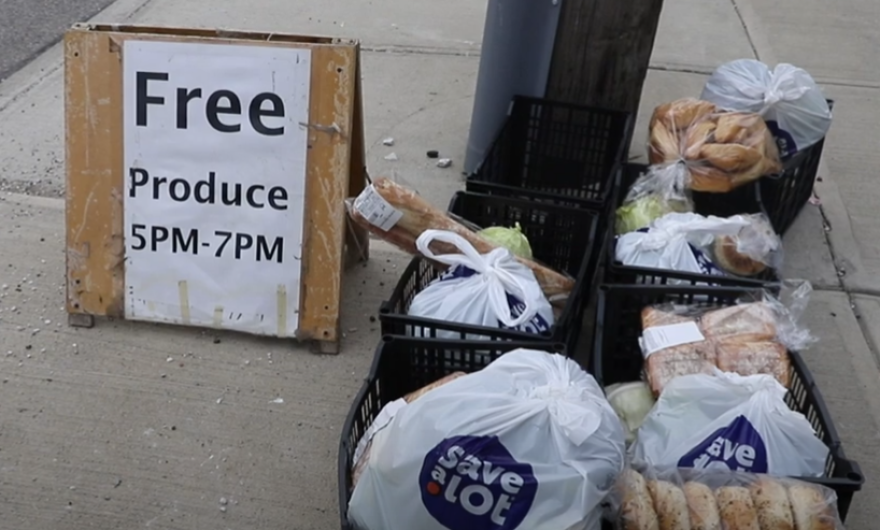St. Luke’s Episcopal Church in Cleveland's Detroit Shoreway neighborhood distributes fresh produce through the Greater Cleveland Food Bank’s Mobile Pantry Program, which served more than 4,000 families last year.
Vidorian Massingale, affectionately known as Chef Vi, is the executive chef for the church’s mobile pantry. Before this job, she was working in food service in schools, but wanted a career that could help people more directly.
“I love working here,” Massingale said. “Everybody is just so interesting. You never really know what people are really going through until you talk to them.”
Food insecurity in Cleveland
Food insecurity — the inability to get nutritious foods to meet one’s needs — is an issue in many Cleveland neighborhoods. According to the Greater Cleveland Food Bank, one in seven people in the food bank’s service area . Nearly a quarter of Cleveland’s children are food insecure.
Food insecurity is a symptom of economic hardship, and its effects reach far beyond just hunger pains, said , assistant professor of nutrition at Case Western Reserve University.

“Food insecurity is a big deal because there is a cycle of hunger and poverty,” Prescott said. “It’s also a big physical and mental health issue. Food insecurity exacerbates stress. People who live a life of chronic stress are at higher risk of disease.”
Federal cuts
However, programs like St. Luke’s mobile pantry are at risk.
Earlier this year, the U.S. Department of Agriculture cut to buy food directly from local farms, ranchers and producers. The USDA also cut nearly $500 million specifically intended to help food banks through its Emergency Food Assistance program.
Joree Novotny is the executive director at the . She said state and federal support provide about half of the supply that food banks across Ohio distribute to families in need.
“Without those investments in our nation’s first line of defense against hunger, we would see devastating ripple effects at the food bank level,” Novotny said. “We don’t have the food supply in our network to replace that purchasing power that 1.5 million Ohioans currently have at the grocery store.”
Additionally, the 2025 federal budget bill slashes more than $100 billion for the Supplemental Nutrition Assistance Program, also known as SNAP or food stamps.
Many, including Novotny, are calling on the federal government for changes.
“What we really need is for Congress to pass a strong bipartisan farm bill,” Novotny said. “[With that bill], we can get some predictability and consistency in what food will be coming into our warehouses for us to supply out to respond to the hunger our communities are facing."
Right now, local food banks such as St. Luke’s aren’t seeing the full effects of the cuts yet. They’ve reported a few weeks with shorter supply, but not enough to stop the program. But Massingale said even when the effects come into play, the pantry is prepared for whatever comes.
“We’re just gonna go with the flow like we always do,” Massingale said. “If we start getting less food or, for some reason, if it gets cut, then we’ll work with the best of our ability. We’ll start working with other churches or ask for grants or donations, so we can keep this going. It's not gonna stop.”



